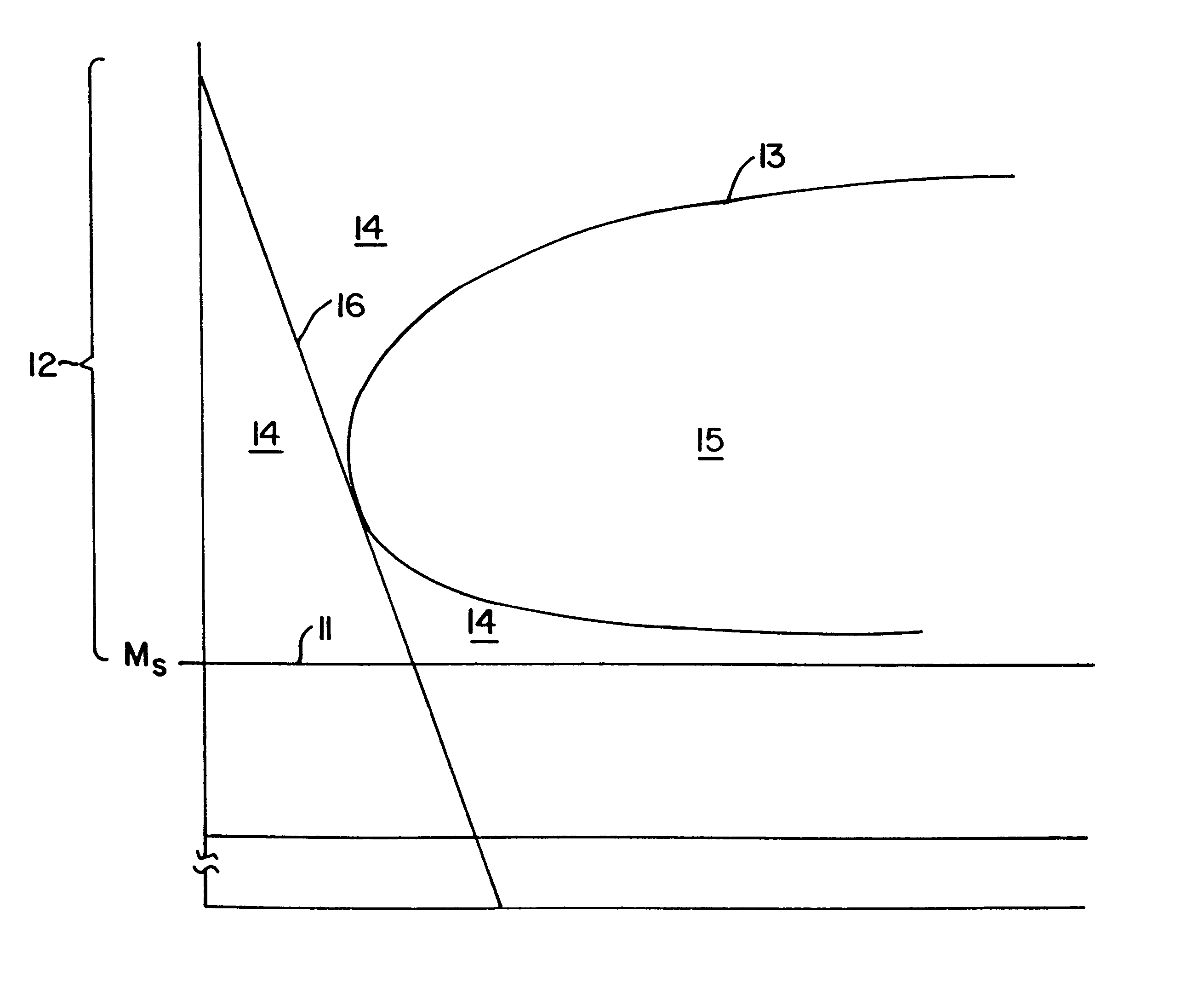Low-carbon steels of superior mechanical and corrosion properties and process of making thereof
- Summary
- Abstract
- Description
- Claims
- Application Information
AI Technical Summary
Benefits of technology
Problems solved by technology
Method used
Image
Examples
Embodiment Construction
Autotempering of an alloy composition occurs when a phase that is under stress due to supersaturation with an alloying element is relieved of its stress by precipitating the excess amount of the alloying element as a compound with another element of the alloy composition in such a manner that the resulting compound resides in isolated regions dispersed throughout the phase while the remainder of the phase reverts to a saturated condition. Autotempering will thus cause excess carbon to precipitate as iron carbide (Fe.sub.3 C). If chromium is present as an additional alloying element, some of the excess carbon may also precipitate as trichromium dicarbide (Cr.sub.3 C.sub.2), and similar carbides may precipitate with other alloying elements. Autotempering will also cause excess nitrogen to precipitate as either nitrides or carbonitrides. All of these precipitates are collectively referred to herein as "autotempering (or autotempered) products" and it is the avoidance of these products ...
PUM
| Property | Measurement | Unit |
|---|---|---|
| start temperature Ms | aaaaa | aaaaa |
| temperature | aaaaa | aaaaa |
| temperature | aaaaa | aaaaa |
Abstract
Description
Claims
Application Information
 Login to View More
Login to View More - R&D
- Intellectual Property
- Life Sciences
- Materials
- Tech Scout
- Unparalleled Data Quality
- Higher Quality Content
- 60% Fewer Hallucinations
Browse by: Latest US Patents, China's latest patents, Technical Efficacy Thesaurus, Application Domain, Technology Topic, Popular Technical Reports.
© 2025 PatSnap. All rights reserved.Legal|Privacy policy|Modern Slavery Act Transparency Statement|Sitemap|About US| Contact US: help@patsnap.com



